A village in Armenia that doesn’t officially exist tells the long, sad story of a persecuted people.
A circuitous road, more concept than fact, marked by the mud ruts of occasional yet indomitable old Niva jeeps, navigates the mountains of Armenia’s Khosrov National Nature Reserve to a mountainside above a tributary of the Azat River. The nature reserve is vast, and straddles most of Ararat Province, which spans Armenia’s closed border with Turkey.
The few vehicles that pass this way belong to the residents of nearby Verin Dvin, an Assyrian village of some two and a half thousand. Their cargo—apples, apricots, and walnuts—helps them make ends meet, but only just. Vadjarvum e—“for sale”—is a common phrase chalked on the sheet-metal doors of Armenia’s rural houses, and Verin Dvin is no exception. Those villagers who return to the mountains between April and November come for the land, the fruit, and the memories.
With a lurch, the track begins its descent towards Gyolaysor, also known as Assyrian Lake, a grassy hollow that brims with water after heavy rains. A Gyol, or Göl, is a lake in a variety of Turkic languages, while Aysor derives from “Assyrian.” Nothing can officially be built—or rather, rebuilt—on the territory of the nature reserve, for Assyrian Lake, the village of Gyolaysor, does not officially exist.
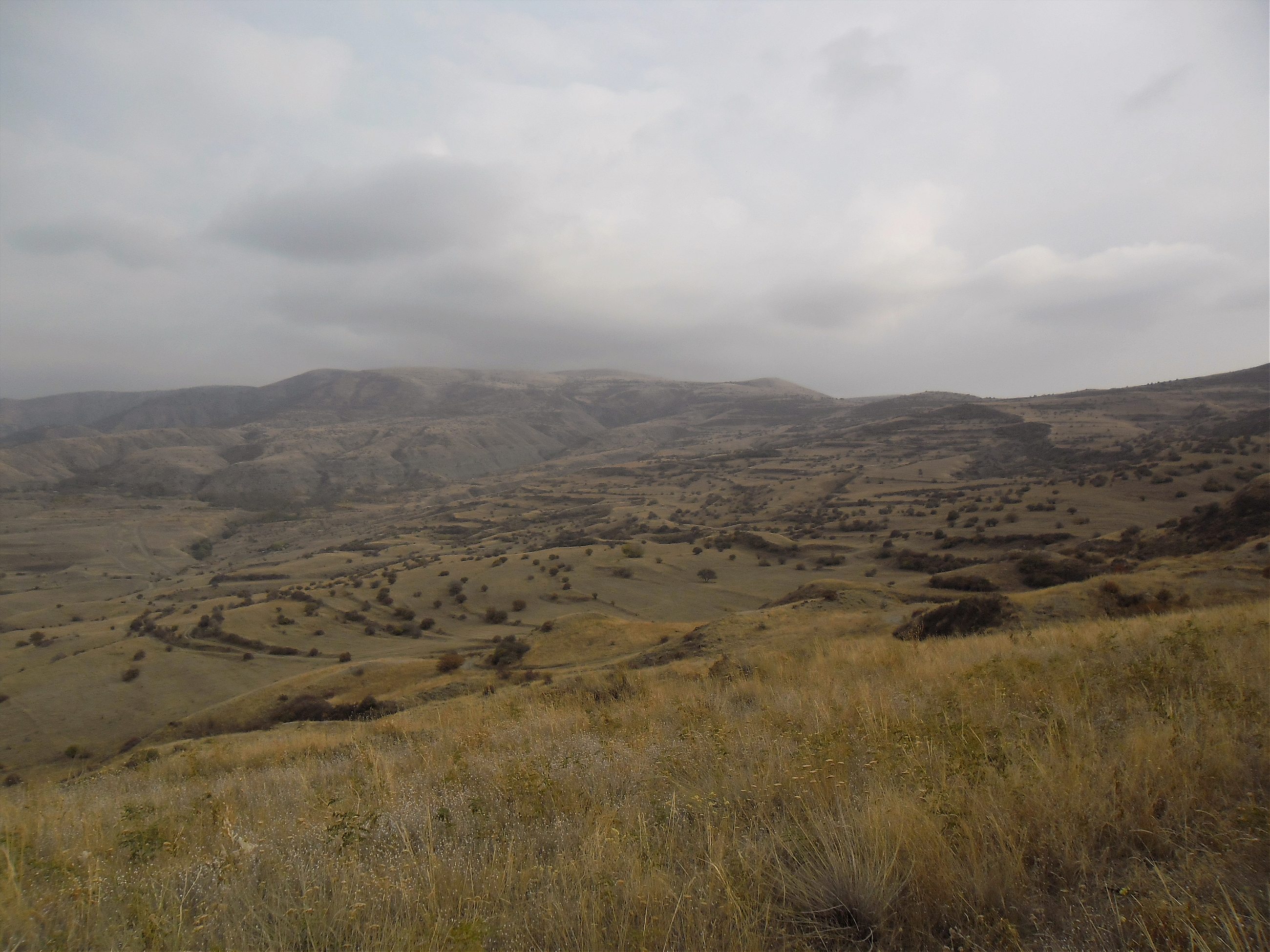
The Assyrians who live there, however, do exist, though even that label—“Assyrian”—is a fraught one. The indigenous Aramaic speaking populations of northern Iraq, northern Syria, and southeast Turkey have long been divided by religion. The members of three churches—the Chaldean, Nestorian, and Syrian Orthodox—identify as Chaldeans, Assyrians, and Syriacs respectively, while still sharing many cultural and linguistic commonalities. Attempts to build a shared Assyrian, Aramean or Syriac identity based on these—and identification with the glories of ancient Assyria—have met with only limited success. Under threat from Islamic State, these peoples’ future in their ancestral homeland is tenuous, and Assyrians across the world are watching.
The 2- to 3 million strong Assyrian diaspora is spread across Europe, the former Soviet Union, North America, and Australia. As ISIS continues its onslaught in Iraq and Syria, Assyrians—along with other minorities—are fleeing their ancestral homeland to join them. Many Assyrians see this exodus as just another part of the history of dispossession and deprivation that has characterized their community for over two hundred years.
The height of this dislocation was the Sayfo, the Assyrian Genocide, during which between 300,000 and 700,000 Assyrian, Chaldean, and Syriac people were killed under the Young Turk leadership of the Ottoman Empire. The Sayfo ran almost concurrently with the Armenian Genocide. As Armenians worldwide marked the centenary of their own genocide, so too was attention drawn to the Sayfo. In March 2015, Armenia joined a growing number of states in recognizing the suffering of Assyrians under the Ottoman Empire as an act of genocide. It is a modest consolation for some Assyrian leaders. “The difference between the Armenian and Assyrian genocides,” says Irina Sagradova, an Assyrian activist and community leader based in the Armenian capital of Yerevan, “is that the Assyrian genocide continues in Syria and Iraq.”
Thousands have fled the country in recent years, though many Assyrians had already left Iraq in the years following the 2003 U.S. invasion.

Some 14 villagers live in Gyolaysor in scattered houses during summer. But they come up here “not to live,” as one notes, “but to exist.” It is a frugal existence. There is plentiful spring water, but no gas and no electricity. Only by standing in one precise spot of an apple orchard on a ridge commanding sweeping views of the valley beyond and stretching a hand to the heavens will a mobile phone user find (very poor) reception. Paper icons and a metal cross adorn the nearby stone shell of the collapsed Mar Gevargis Church, slouching into the earth. It was never structurally sound: As a 1912 list of churches in the Russian Caucasus noted, its turf roof was prone to collapsing in heavy rains, “which renders prayer here particularly dangerous.”
Collapsed stone khachkars, intricately carved memorial crosses scattered across Armenia, form the village cemetery next to the ruins of the church. One bears an inscription in Assyrian—simply the name “Omar.”
Sergei Nikodemovich Tumasov, 83, is the self-declared village head of the non-village of Gyolaysor. He lights an Ararat cigarette and inspects the goods—bottles of lemonade dutifully bought by jeep from Verin Dvin. There are no shops in Gyolaysor. Mikhail and Ashur, two Assyrians from Verin Dvin with Gyolaysor origins—start preparing khorovats kebabs, a pheasant watching warily. Sergei’s rudimentary summerhouse is made of rough stone, cool and dark. His Armenian wife Zhuleta stands mute, hospitable and beaming; she speaks little Russian.
Her husband, however, speaks it loudly and obligingly. We eat, drink, and laugh in the darkness, punctuated by the calls of pheasants and livestock. Sergei and Zhuleta have pieced together the ruins of a vanished village, and among them they have made a home.
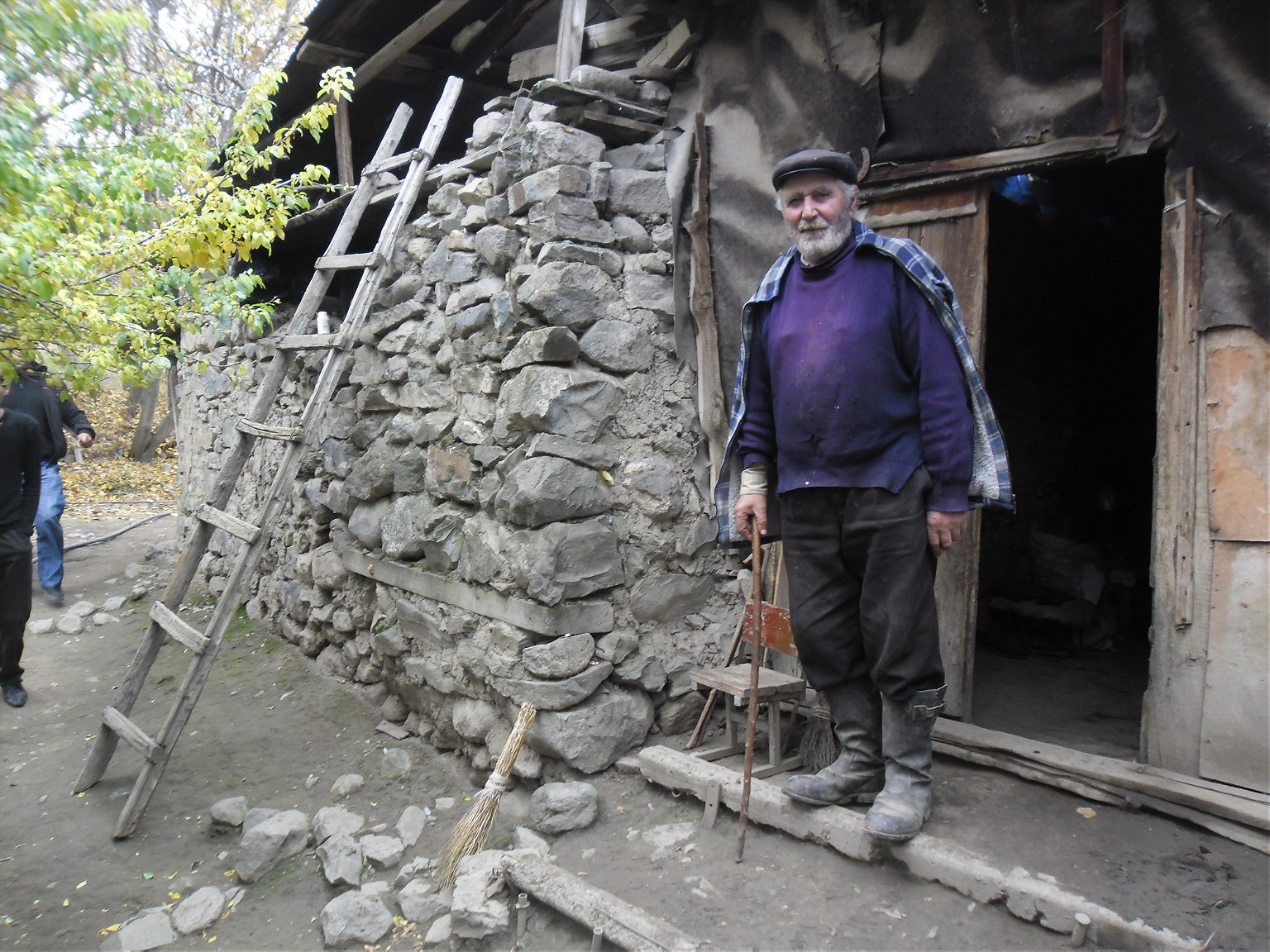
Assyrian Lake was a place of exile. Gyolaysor was first settled during the 1830s, following the Russian Empire’s annexation of what is now Armenia and Azerbaijan as a consequence of the 1828 Treaty of Turkmenchay with Qajar Persia. Most Assyrians in Armenia trace their origins to Urmia, a city and lake in northwest Iran. Assyrians who had fought alongside the Russian armies against the Persians were permitted to resettle in these newly conquered territories, Russifying their surnames and accepting the Orthodox faith.
According to the late community activist and scholar Ivan Abdalov, Gyolaysor’s founders originated from the mountainous Saray-Makhmudia region of the Ottoman Empire, now in the Hakkari Province of modern Turkey bordering Iraq. To this day, some descendants of Gyolaysor’s inhabitants still speak a distinct dialect of Assyrian Neo-Aramaic, preserved in Armenia while the language had all but faded away from their ancestral villages in Turkey. “Ana Urmijenāye”—“I am from Urmia”—say Assyrians in Verin Dvin. “Ana Makhmudiyāye”—“I am from Makhmudia”—respond their counterparts from Assyrian Lake.
In his dog-eared notes on the Assyrian community’s history, Abdalov recounts a story told to him about the exodus from Makhmudia. A Turkish Agha, a feudal lord in the region, decided to marry a young Assyrian woman, Maryam. When the Agha learnt of the Christian villagers’ opposition to the marriage, he flew into a rage and unleashed punishments of Biblical proportions. Famine and disease stalked the village, as did the Agha on horseback, mocking the survivors with his wealth and authority. The desperate and destitute Assyrians murdered the Agha at night and fled over 200 miles to Armenia, founding Assyrian Lake. Neither Maryam’s fate—nor her own opinion of the marriage—are mentioned.
Such stories of exodus are fairly common for rural villages in Armenia, notes ethnographer Hranoush Kharatyan of the Armenian Academy of Sciences. Armenian refugees fleeing Turkey after 1915 bought similar accounts with them. It is said in the case of Gyolaysor that the Assyrians chose this spot because of its resemblance to their native village: its dry lakebed reflecting the mountains of southeast Turkey.
For a homeland so often preceded with the words “ancient,” “ancestral,” or “biblical,” Armenia has many modern myths of origin. In 1920, the Bolsheviks entered Yerevan and extinguished the short-lived Armenian Democratic Republic. The Soviet annexation came to be seen by many Armenians around the world as a necessary, if regrettable, move in preserving some form of Armenian statehood. In a sense, the modern Republic of Armenia is presented as a homeland for all peoples who suffered alongside the Armenians during the Young Turks’ ethnic cleansing of Anatolia.

Sergei Tumasov was one of that Soviet generation for whom the collapse of the Soviet Union was not merely a tragedy, but a ludicrous one. Born into a Gyolaysor Assyrian family living in extreme poverty in 1933, both of Sergei’s parents died during his childhood. After finishing his military service in Odessa, he returned to Gyolaysor and raised a family of two sons and three daughters, working as the deputy director of the village collective farm. “Then that fool Gorbachev did what he did, and everybody left the village, the country,” he says. “And only we two were left.”
Sergei calls the collapse of the USSR a “revolution”, an uncannily unfamiliar perspective for western Europeans. There is method to the cantankerousness. It is little solace to gain the uncertainties of a new country if only to lose the securities of the old. Mourning the Soviet past in the Caucasus carries nostalgia for an idealized Brotherhood of Nations that eventually collapsed into internecine, interethnic conflicts. That he should need a passport to travel to Georgia is ludicrous; that he should be denied travel to Azerbaijan on the basis of his Armenian passport is a grim farce.
“There was a shop! A hospital! A collective farm! A school!” Sergei exclaims. “The only thing which was scarce was bread—that was all sent down to the valley.” His three sons have left Armenia to work in Ukraine, “and do they live any better over there these days? Do they hell!”
He is incredulous when asked the nature of his sons’ work. “My God! How should I know! Like everybody, they pick apples and send them for ten kopeks more in the market. Can you live like that?” If the Church was restored, then the youth would return from Verin Dvin from abroad and re-establish Gyolaysor, he opines. If the Church was restored, the school would be restored. If the school was restored, then seven kilometres of non-existent road could be paved.
Who else could elicit emotions strong enough to demolish a skull of reinforced concrete?
At the intersection of the three roads of Gyolaysor is a level area strewn with weeds and bricks—though whether these plants are weeds when human settlement has legally surrendered to nature is difficult to say. Some of these weeds are now tall trees. This was Gyolaysor’s village square, now occupied solely by a resolute concrete figure on a plinth. One of his hands is thrust into the pocket of a distinctive military greatcoat. The other hangs limply at his side.
A crucial extremity is missing: the figure has been beheaded. This does not hinder identification, however: The headless recluse is Joseph Stalin, and this may be his last statue standing in Armenia. Who else could elicit emotions strong enough to demolish a skull of reinforced concrete? According to Tumasov, the beheader was a young Assyrian man named Gevargizov. A few bullet-holes pockmark the concrete, allegedly the work of fedayi, Armenian volunteer militia who used the statue for target practice before departing for the Nagorno-Karabakh War.
That a statue to Stalin still stands in Gyolaysor provides a clue as to when—if not why—the village disappeared. De-Stalinisation efforts from 1956 to 1962 saw local officials removing many such statues, but by that time, Gyolaysor had disappeared from maps of Soviet Armenia. No one thought to remove a statue from a place that did not exist. The Abdalov family, Arsen Mikhailov—President of Armenia’s Atur Assyrian association—and many Assyrians in Verin Dvin assert that Gyolaysor was abandoned at some point during the late 1940s after its collective farm was denounced by the local Soviet authorities.
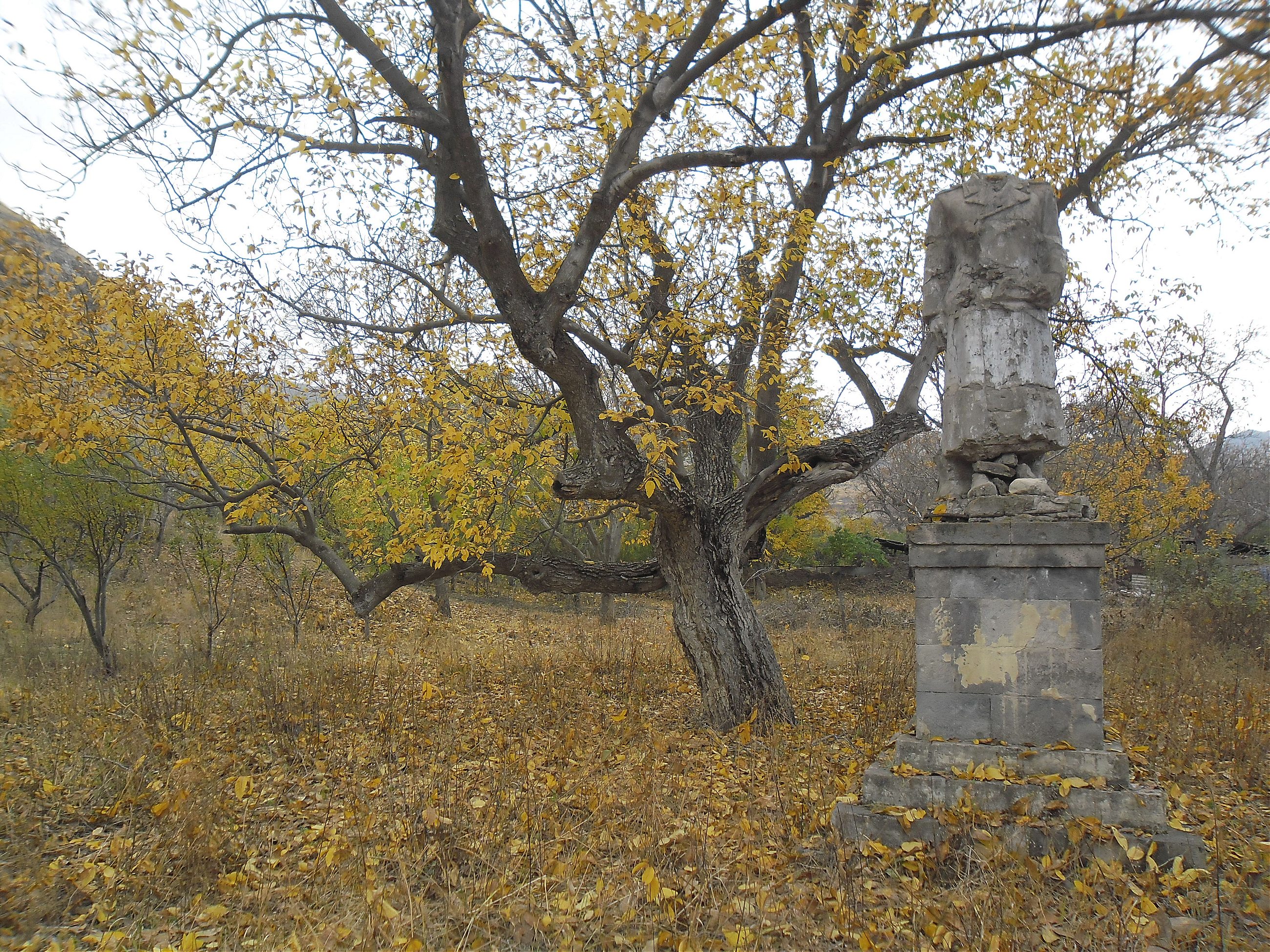
The euphemism recorded, “lacking perspective,” would seem to fit the stereotype of the Soviet bureaucrat, petty and cynical, with a craven indulgence for political doublespeak. The year 1949 saw mass deportations of Soviet Assyrians to Siberia, where many perished. Among the dead was one probably apocryphal Assyrian scholar named Yosip, who is said by Sergei to have educated a certain Georgian boy, one Ioseb Jugashvili, in the Russian language. Any proof of this Yosip—legendary tutor to the young Joseph Stalin—proved as elusive as the exact fate of Gyolaysor.
The Soviet state extolled the virtues and boundless successes of its modernizing program in the most remote corners of its periphery—and nowhere more so than in the Caucasus and Central Asia.
Mikhail Kalatozov’s 1930 film Salt for Svanetia chronicles the deprivation of an impossibly isolated village in the mountains of western Georgia. Its final scenes see flag-strewn steamrollers and sweat-drenched labourers carve a road through solid rock to save the few local residents from poverty, connecting them with Soviet civilization.

Gyolaysor was one of several villages across the Soviet Union where the reverse was true: Communist civilization declared these towns to be impractical and so they ceased to exist. A cursory visit to the emptied villages of rural Armenia or Georgia today will reveal parallels.
Many villages have lost “perspective” (and all but their oldest and most infirm residents) during the transition to capitalism, though the choice of euphemisms is so much wider. “We lived well before the revolution,” says Sergei, “and now… we can still live. We can live here.” At the time of my visit there were just 14 people living in Gyolaysor. I ask if children are still born here. “No, the births have finished,” he replies: There are only deaths in Assyrian Lake.
Somewhere beneath the shrubs lie the knee-high remains of a Muslim prayer room. It was destroyed, to Tumasov’s chagrin, by a distant Gyolaysor relative. The Turks, he claims, for their part destroyed the Church of Mar Gevargis. But how, I ask, could the Turks have destroyed the Church in the Soviet period? The answer is elementary: The culprit was one Shabanov, chairman of the village Soviet, of Azerbaijani extraction, and therefore a Turk.
The majority of Gyolaysor’s population were, as tsarist census-takers wrote, members of “Turkic ethnic groups.” The cumbersome description was duly “corrected” by Soviet ethnographers after 1926. As the list of official nationalities in the Soviet Union contracted, many Turkic peoples across the South Caucasus were reclassified as “Azerbaijani.” By 1991, the overwhelming majority of the 200,000 ethnic Azerbaijanis living in Armenia in the mid-1980s had fled to neighboring Azerbaijan. The approximately 350,000 Armenians in Azerbaijan likewise fled their homes for their republic. Armenia became more ethnically homogenous than at any point in its prior history, ethnic Armenians comprising 98.1 percent of its population. A document from the Azerbaijan Presidential library cites Gyolaysor (as “Golaysor”) as being a “settlement destroyed by Armenians for they were Azerbaijani” between 1948 and 1951.
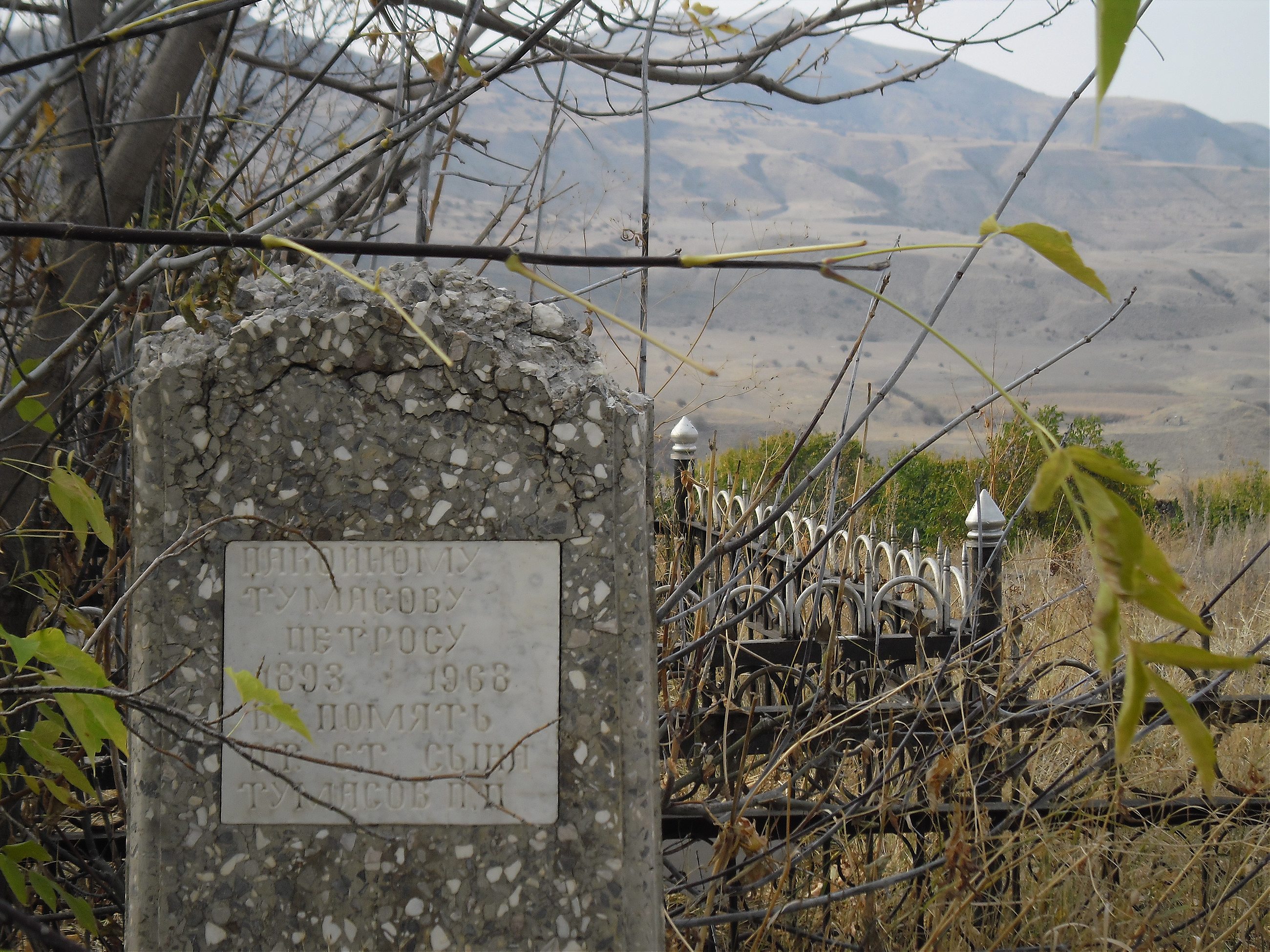
In Yerevan’s Sundukyan Theatre, I meet actor and deputy director Razmik Khosroev. He is every inch the dramatist, speaking through a flourishing salt-and-pepper beard and cigarette smoke, and with contagious humour. He was the last person born in Gyolaysor, in 1949, into a family of seven sisters and two brothers.
He remembers nothing of the village save its loss. The Khosroev family were resettled in the nearby town of Vedi, living under the roof of an Azerbaijani who would later flee to Baku. After five years, they built their own house. Occasionally his father would climb onto the roof and stand, staring across the Turkish border to Mount Ararat. “It was something else, I’m sure,” Razmik says, “something more sinister. Something connected to our nationality.” (I would later find a reference to Gyolaysor being “razed to the ground” on the day of his birth—but no more.)
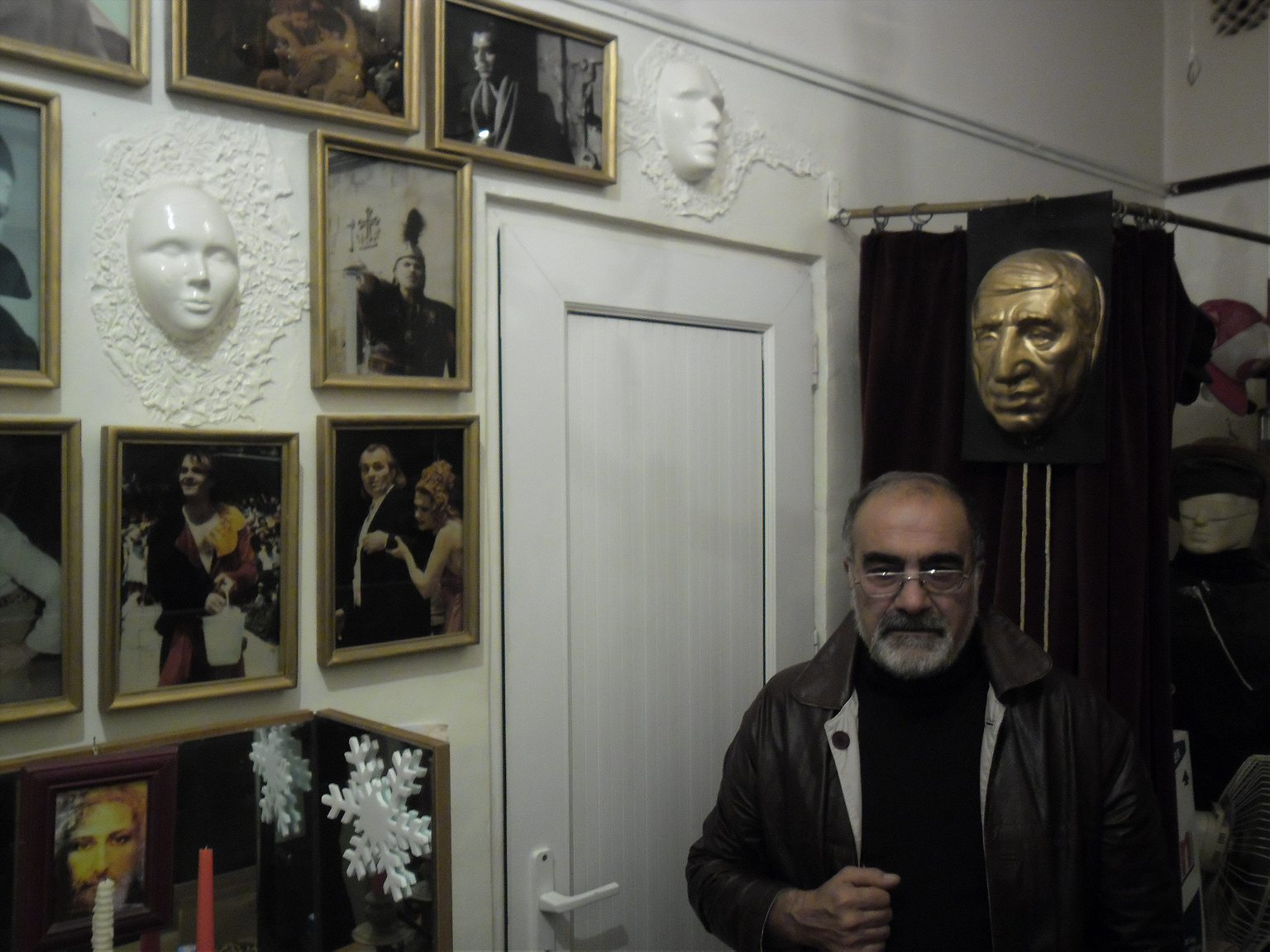
There are more practical reasons for a village’s death. From the establishment of the Khosrov National Park in 1958, human beings could live on the territory only as park rangers. A farmer—even a modest one—would upset both its delicate ecosystem and delicate officials. An employee of the nature reserve’s administration in Vedi opposed the resettlement of Gyolaysor, if such a term is not too ambitious.
Assyrian Lake is a chimera; all inhabitants are invasive species. This is land for the owls, lynxes, wolves, vultures, and bears, who when roused are known, so it is said in Verin Dvin, to dent the doors of jeeps. Gyolaysor’s village cemetery stakes a claim, though Armenia has tombs in abundance. Perhaps these should be left to rest.
Razmik performs another anecdote when we meet again for coffee. In the early to mid-1960s, a Georgian living in Armenia learnt of the Stalin statue at Assyrian Lake. On occasion, he would go up into the mountains and apply a thick coat of white paint, all the better to keep the past presentable, however grim it proved to be for those who lived with its consequences in the present.